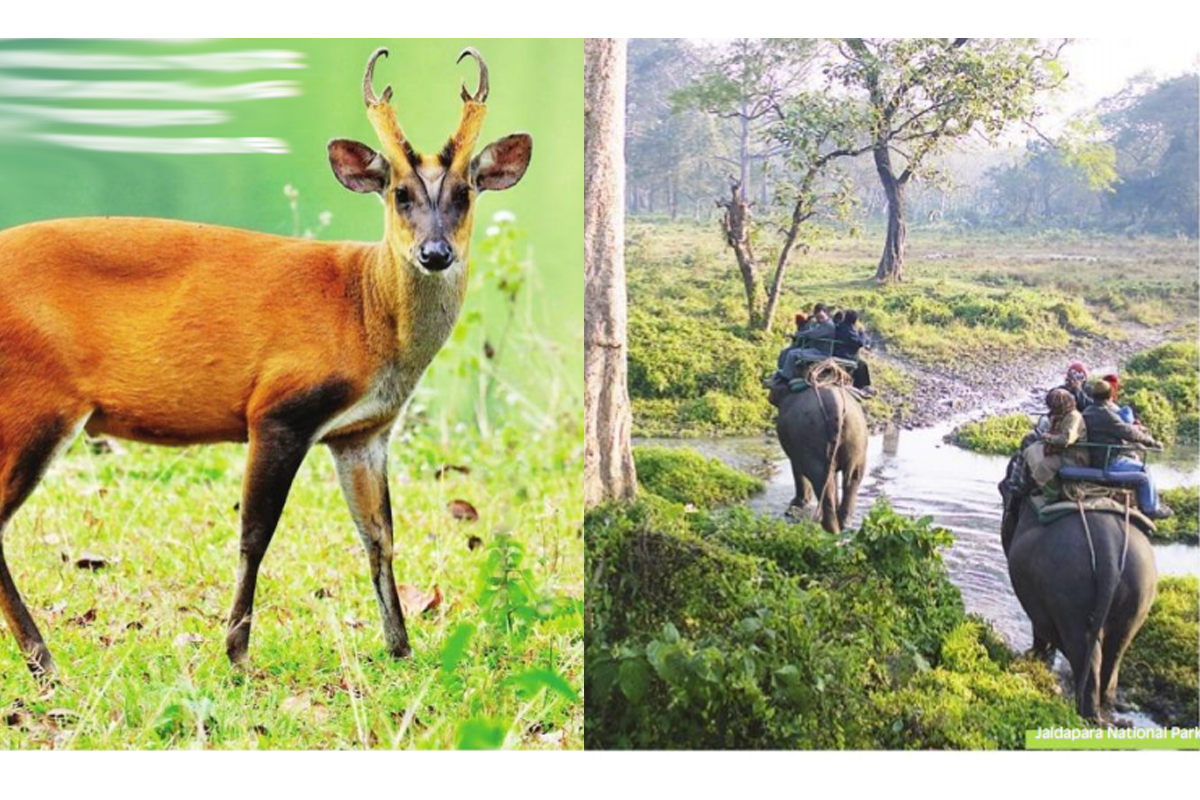Ahead of Assembly polls BJP MLAs ask for development
As the countdown to the 2026 Assembly elections begins, political leaders are leaving no stone unturned to secure their positions.
The barking deer, though not an endangered animal, is a rare species which must be protected from poachers as well as local villagers who are known to consume their meat.

Photo: SNS
Here’s a chance to know about the barking deer, which resides in Gorumara and Jaldapara national parks of North Bengal. Professor Amal Bhattacharya, a well-known researcher of Raiganj University, had a close encounter with the barking deer while carrying out a major research operation sponsored by the University Grants Commission, called “Ecology, Behaviour and Management Practices of the Great Indian One-Horned Rhinos.” The research was taken up in Gorumara and Jaldapara National Park in the 1980s and 90s.
Bhattacharya, who is the head of the department of Zoology, Raiganj University, said, “The barking deer is a shy faunal species that primarily resides in dense jungles and not on grasslands. These faunal beings are forest dwellers that survive on fruits and leaves that fall on the ground. They are diurnal in their habitat and, although they breed from the end of January till March, they usually do not have any specific breeding period.” Bhattacharya also said that he is planning to take up a study called “Population and Current Status of Barking Deer”.
Advertisement
These faunal beings are spread out across all national parks and wildlife sanctuaries of India and South-east Asia. Bhattacharya said, “These animals reside in Borneo, Indo-China border, Malaysia, Thailand, Vietnam and Laos. In India, they inhabit Central and North India barring Rajasthan and Jammu and Kashmir. In North Bengal, besides Gorumara and Jaldapara National Parks, they are confined to the forests of Chapramari, Mahananda and Singalila National Park.
Advertisement
The faunal species has the lowest pairs of chromosomes. The female barking deer possesses six pairs of chromosomes, while the males have seven pairs. The male members have long canines that are used in tearing the flesh of their competitors and preys. They are characterised by small antlers with a shoot emerging from the base of the antlers.
Till today, the barking deer is not a threatened species; but this does not indicate that these animals are free from the cruel hands of poachers. Sometimes it so happens that poachers target these faunal species for their skin, while local villagers consume their meat. Bhattacharya also said, “The habitat of the barking deer should be left undisturbed. Care needs to be taken to maintain their habitat.”
Advertisement